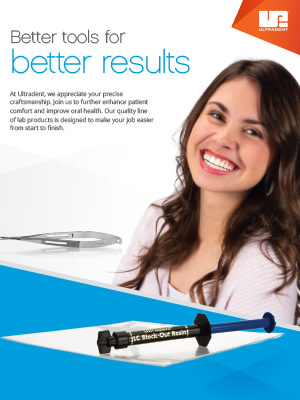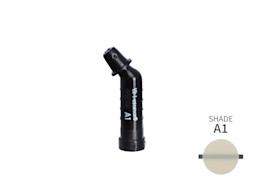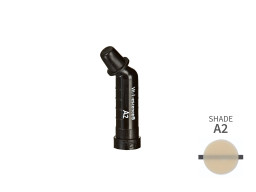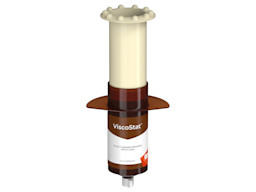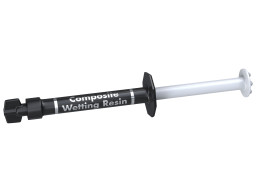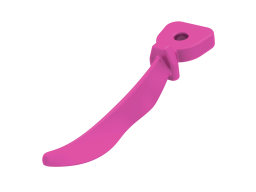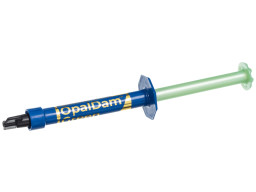Ultradent™ LC Block-Out Resin
Free Standard Shipping on All Orders $285+
Instructions for Use (IFU)
Safety Data Sheets (SDS)
Product Allergens
See any common allergens this product may contain >>Price breaks are offered on most items...
This amount is an estimate based on retail price. The actual amount due (shown at the final stages of your order) may be different from what is displayed here.
Return Policy
Items returned within 30 days of purchase with a return authorization number on the outside and inside of the return box will be credited 100%. Product returned between 31 and 60 days from purchase date is subject to a 20% restocking fee. Ultradent will not accept returns after 60 days. Errors in shipment must be reported within 14 days of invoice date. All return authorization numbers become invalid 90 days after date of issue. A return authorization number must accompany all returns to receive proper credit. Please contact Customer Service at 800.552.5512 for assistance.
Limited Warranty
Ultradent™ LC Block-Out Resin provides reservoir space for whitening trays and so much more. Use it for lab procedures requiring spacing or undercut block out, and to repair small fractures or voids in laboratory models. It must be light-cured and is not intended for intraoral use.
- Optimal viscosity for proper application
- Blue pigment for easy visibility
- Great utility resin with numerous uses
- Use with Black Mini™ Tip
- Certified gluten free
















Technical Details
Multipurpose Resin
Ultradent LC Block-Out Resin is ideal for creating reservoir space in whitening trays, but it can do so much more! Use it for lab procedures requiring spacing or undercut block out, and to repair small fractures or voids in laboratory models.
Ideal Viscosity
Placing a resin on a stone model requires that the resin not slump or migrate as the stone model is rotated. Ultradent LC Block-Out Resin features an ideal viscosity that prevents the resin from moving to areas where it’s not intended to go.
Easy to Use
Ultradent LC Block-Out Resin features a no-mix formula that is easily delivered via syringe, allowing for precise placement.
Clinicals
Create Reservoir Spaces

Block Out Undercuts
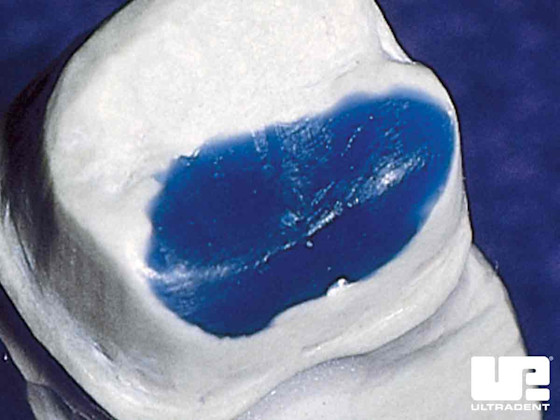
Procedures
Tray Fabrication Step by Step
See Instructions for Use for complete instructions, warnings, and precautions.
Step 1

Pour impression with fast-set plaster or dental stone. Pour alginate shortly after making impression to ensure accuracy. Trimming is less work if quantity of stone is kept to a minimum. Palate and tongue areas are not poured or should be removed after plaster has set. Allow model to dry two hours.
Step 2

For reservoir spaces, apply Ultradent™ LC Block-Out resin approximately 0.5 mm thick onto labial surfaces and approximately 1.5 mm shy of the gingival margin. DO NOT extend onto incisal edges or occlusal surfaces. Using a VALO™ curing light, cure each tooth 5 seconds. Wipe off oxygen inhibition layer.
Step 3

With a vacuum former, heat tray material (Sof-Tray™ Classic Sheets) until it sags approximately ¼" to ½" for the 0.035" material and 1" for the thicker material (0.060" and 0.080"). Adapt plastic over model. Cool and remove model from the vacuum former. Cut excess bulk of material away with serrated plastic trimmers (e.g. Ultradent™ Utility Cutters).
Step 4

With small tactile scissors (e.g. Ultradent™ Ultra-Trim Scalloping Scissors), carefully and precisely trim the tray to the clear line which is at the gingival height. Scallop edges to avoid contact with gingival tissue.
Step 5

Return tray to model; check tray extensions. Gently flame polish the edges one quadrant at a time, if necessary, with a butane torch. While still warm, immediately hold periphery of each segment firmly against model for three seconds with water-moistened gloved finger. If this over-thins the tray material, fabricate a new tray.
Step 6

Review enclosed instructions with patient to brush teeth and explain the process of loading the tray by expressing one continuous bead of gel approximately halfway up from the incisal edge on the facial side of the tray from molar to molar. Explain that this should use about 1/2 to 1/3 of a syringe.
Step 7

Place tray over teeth. Gently press tray to move gel into place. Pressing too firmly will force gel out of tray.
Step 8

Remove excess gel with a soft toothbrush.
Step 9

Clean tray with soft toothbrush and water. Remind patient to follow the whitening regimen you have established.
Note: See Instructions for Use for complete instructions, warnings, and precautions.
Testimonials
“LC Block-Out is the original resin block-out product for extraoral use and it’s still the best.”
– Reality Ratings
Frequently Asked Questions
-
What if I get the resin where it’s not supposed to go? Do I have to create a new stone model and start over?
No. If you accidentally get a little bit of Ultradent LC Block-Out Resin where it’s not supposed to go, simply light cure it for one or two seconds, and peel it off the stone model.
-
Why are reservoir spaces necessary in a whitening tray?
When custom trays are fabricated with reservoirs, the whitening gel has more space to reside within the tray without being squished out onto the soft tissues. This allows the gel to stay in contact with the teeth throughout the entire treatment, and it helps to prevent irritation caused by the gel coming in contact with the soft tissue.
-
How thick should the resin be placed on the stone model when creating reservoir spaces?
You’ll want a layer of Ultradent LC Block-Out Resin about 0.5mm thick.
-
Does Ultradent LC Block-Out Resin need to be refrigerated?
No. Store it at room temperature.

